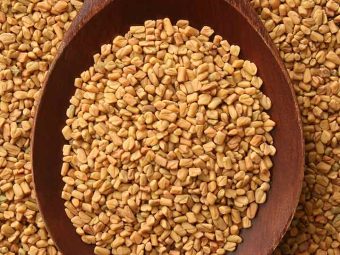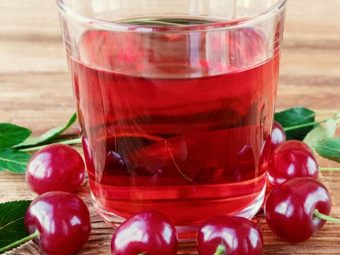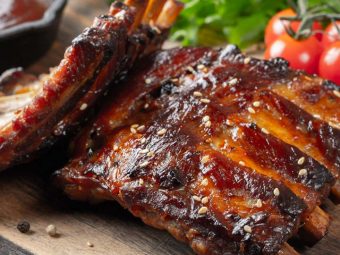What Is Glycemic Index & List Of Foods With Their GI
Plan your diet wisely and say 'no' to foods that increase blood sugar levels rapidly.

Glycemic index (GI) is a value given to foods depending on how quickly or slowly they increase blood glucose levels. Foods with lower GI digest slowly and do not increase blood glucose levels rapidly, which is not the case with high-GI foods.
Wondering why your diet plan is not yielding desirable results? Well, chances are that you have not made the best food choices. Knowing all about GI helps you determine which foods suit your diet and which do not.
In this article, we have classified foods based on GI (low, medium, or high) and discussed which foods are ideal for you. Keep reading to learn more!
In This Article
What Is Glycemic Index?
Glycemic index is a value assigned to foods based on how slowly or quickly they increase they increase the blood glucose (sugar) levels.
Glucose is given a value of 100. If the test food is assigned a value below 100, that food is expected to impact your blood sugar lesser than glucose. If the test food is assigned a value over 100, that food is expected impact your blood sugar more than glucose.
Low GI foods tend to aid weight loss while high GI foods help with energy recovery after exercise or offset hypoglycemia (low blood glucose levels) (1).
But, hold on! How does that even make sense? Is it just another fancy number game?
Absolutely not!
Why Should Glycemic Index Matter?
It would matter because foods having a low glycemic index (GI) tend to release blood glucose slowly and steadily. Foods having high glycemic index release blood glucose rapidly.
The glycemic index classification of foods is used as a tool to assess prevention and treatment for diseases. Especially those where glycemic control is of importance – like diabetes.
Low GI diets improve the serum lipid profile, reduce C-reactive protein (CRP) concentrations, and aid weight control.
Such foods are also associated with higher levels of high-density lipoprotein cholesterol (HDL-C). Including them in your diet can decrease the risk of developing diabetes and cardiovascular disease (2).
Alright, if it is so important, how do we know the glycemic value of the foods we eat every day?
Worry not! In the following sections, we have listed groups of ingredients that have low and high glycemic indices.
Keep this in mind while looking at the charts:
High GI: Food is assigned a value of 70 or higher.
Medium GI: Food is assigned a value of 56-69.
Low GI: Food is assigned a value of 55 or less.
Now, take a close look at the groups below and see which ones can you include in your regimen (3).
Note: The GI values of a few items are in terms of average ± standard error of mean (SEM.)
In This Article
- Fruits And Fruit Products
- Vegetables
- High-Carbohydrate Foods
- Breakfast Cereals
- Dairy Products
- Legumes
- Snacks
1. Fruits And Fruit Products
| Product | GI |
|---|---|
| Grapefruit | 25 |
| Apple, raw | 36 ± 2 |
| Pear, raw | 38 |
| Apple juice | 41 ± 2 |
| Dates, raw | 42 ± 4 |
| Orange, raw | 43 ± 3 |
| Peaches, canned | 43 ± 5 |
| Strawberry jam/jelly | 49 ± 3 |
| Orange juice | 50 ± 2 |
| Banana, raw | 51 ± 3 |
| Mango, raw | 51 ± 5 |
| Grapes, raw | 59 |
| Pineapple, raw | 59 ± 8 |
| Raisins | 64 |
| Watermelon, raw | 76 ± 4 |
2. Vegetables
| Vegetable | GI |
|---|---|
| Carrots, boiled | 39 ± 4 |
| Vegetable soup | 48 ± 5 |
| Green peas | 51 |
| Parsnips | 52 |
| Taro, boiled | 53 ± 2 |
| Plantain/green banana | 55 ± 6 |
| Potato, french fries | 63 ± 5 |
| Sweet potato, boiled | 63 ± 6 |
| Pumpkin, boiled | 64 ± 7 |
| Potato, boiled | 78 ± 4 |
| Instant mashed potato | 87 ± 3 |
3. High-Carbohydrate Foods
| Product | GI |
|---|---|
| Barley | 28 ± 2 |
| Fettucine | 32 |
| Corn tortilla | 46 ± 4 |
| Spaghetti, wholemeal | 48 ± 5 |
| Spaghetti, white | 49 ± 2 |
| Chapati | 52 ± 4 |
| Sweet corn | 52 ± 5 |
| Specialty grain bread | 53 ± 2 |
| Rice noodles | 53 ± 7 |
| Oatmeal | 55 |
| Udon noodles | 55 ± 7 |
| Couscous | 65 ± 4 |
| Quick-cooking Basmati rice, white | 67 |
| Brown rice, boiled | 68 ± 4 |
| White rice, boiled | 73 ± 4 |
| Whole wheat/wholemeal bread | 74 ± 2 |
| White wheat bread | 75 ± 2 |
4. Breakfast Cereals
| Cereal | GI |
|---|---|
| Quinoa | 53 |
| Porridge, rolled oats | 55 ± 2 |
| Muesli | 57 ± 2 |
| Millet porridge | 67 ± 5 |
| Wheat flake biscuits | 69 ± 2 |
| Rice porridge/congee | 78 ± 9 |
| Cornflakes | 81 ± 6 |
5. Dairy Products
| Product | GI |
|---|---|
| Soy milk | 34 ± 4 |
| Milk, skim | 37 ± 4 |
| Milk, full fat | 39 ± 3 |
| Yogurt, fruit | 41 ± 2 |
| Ice cream | 51 ± 3 |
| Rice milk | 86 ± 7 |
6. Legumes
| Food | GI |
|---|---|
| Peanuts | 7 |
| Soya beans | 16 ± 1 |
| Kidney beans | 24 ± 4 |
| Cashews, salted | 27 |
| Chickpeas | 28 ± 9 |
| Black beans | 30 |
| Lentils | 32 ± 5 |
| Black-eye peas | 33 |
| Baked beans | 40 |
7. Snacks
| Food | GI |
|---|---|
| M-&-M peanuts | 33 |
| Chocolate | 40 ± 3 |
| Corn chips, plain, salted | 42 |
| Potato chips | 51 |
| Soft drink/soda | 59 ± 3 |
| Popcorn | 65 ± 5 |
| Pretzels, baked | 83 |
| Rice crackers/crisps | 87 ± 2 |
Isn’t that a long enough list to set an entire week’s diet plan?
I already have a few recipes with the low and medium GI foods in my mind. I’m sure you would have some as well!
Before you rush to your kitchen with those creative recipes, take a step back and think.
How Is Glycemic Index Calculated?
GI is a relative measure. It is usually expressed relative to glucose (control food).
Typically, healthy volunteers are given a test food that provides 50 grams (g) of carbohydrate. On a different day, a control food (white, wheat bread or pure glucose) that provides the same amount of carbohydrate is given.
Blood samples for the determination of glucose concentrations are taken prior to eating, and at regular intervals for a few hours after eating. The changes in blood glucose concentration over time are plotted as a curve.
The GI is calculated as the incremental area under the glucose curve (iAUC) after the test food is eaten, divided by the corresponding iAUC after the control food (pure glucose) is consumed.
Simply put, this is the formula used:
| GI | = | iAUCtestfood | x 100 |
| iAUCglucose |
What Is Glycemic Load?
The glycemic load (GL) is a measure that takes into account the planned portion size of a food item as well as its glycemic index.
For those interested, here’s some math:
| GLFood | = | GIFood | x | amount (g) of available carbohydrateFood per serving |
| 100 | ||||
What’s My Take?
Glycemic index is an easy and simple way of analyzing what goes into your body. It can also help you choose healthier alternatives for your daily meals.
GI values can vary depending on the ripeness of the food, the degree of processing, and the cooking method.
Moreover, a lower GI value does not necessarily mean the food is a better choice. For example, a chocolate candy bar and a cup of brown rice may both have a GI of 55, but the overall nutritional value is very different.
The glycemic index (GI) of a specific food can be calculated based on how slow or fast it spikes blood glucose levels. People with diabetes should check their food intake and their GI values as they play a key role in diabetes. Low GI diets may aid in weight control, improve serum lipid profile, and decrease the risk of cardiovascular disease and diabetes. While fruits and vegetables like apples, grapefruits, pears, carrots, and green peas have low GI values, watermelon, boiled potato, and instant mashed potato have high GI values. That said, foods with a lower GI value may not always be recommended if they have a poor nutritional value. Hence, always check the nutritional profile of foods before consuming.
Frequently Asked Questions
Is peanut butter low glycemic?
Yes. Both peanuts and peanut butter have a low glycemic index and raise blood sugar levels slowly after meals.
Is cheese low GI?
Yes. Cheese has a low glycemic index, and its consumption does not result in blood sugar spikes.
References
- “Glycemic index for 60+ foods” Harvard Health Publishing, Harvard Medical School.
- “The glycemic index: physiological significance” Journal of the American College of Nutrition, US National Library of Nutrition.
- “International Tables of Glycemic Index…” Diabetes Care, US National Library of Medicine.
- “Glycemic index and glycemic load…” Oregon State University Extension.












